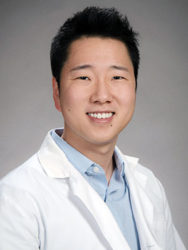From the UW news, because bragging on the UW, even if MK decided to leave …
The U.S. Food and Drug Administration (FDA) has approved Dr. Jonathan An from the UW Department of Oral Health Sciences to lead the first-ever study to evaluate rapamycin in older adults with periodontal disease. Rapamycin is an FDA approved drug with immune modulating properties that is a prominent focus in anti-aging (geroscience) research.

Dr. Jonathan An
Researchers in the aging field have shown that rapamycin can improve the aging process in mice by inhibiting a pathway called mTOR, which regulates nutrient sensing and cell growth. Rapamycin is a specific inhibitor of mTOR, and while studies have used rapamycin and its derivatives on humans, Dr. An is the first to be approved by the FDA to study rapamycin in the context of oral health and periodontal disease.
“If periodontal disease is age-related, and rapamycin can target the aging process and improve it, then we want to find out what happens to periodontal disease when rapamycin is used,” said Dr. An. Periodontal disease is a chronic oral inflammatory disease that affects over 70 percent of adults over the age of 65 years old. The estimated cost of untreated periodontal disease in the United States is an estimated $154 billion. As there is no cure for periodontal disease, current remedies merely target its symptoms for temporary relief.
The study will conduct trials on adults over the age of 50 who have periodontal disease by intermittently providing them with rapamycin over a span of eight weeks. Participants will then receive dental cleanings and be compensated for their time.
“Currently, if you are diagnosed with periodontal disease, you get the same treatment if you are 40 as when you’re 50 or 60 years old,” said Dr. An. “So, for these older adults, if we give them rapamycin beforehand, we may be able to alter their immune responses so they get a better treatment outcome than merely alleviating their symptoms on a surface level .”
The FDA will look at the effects of rapamycin on participants’ periodontal disease, but as the first FDA-approved study to use rapamycin, other research groups will have a keen interest in a variety of its outcomes. Dr. An will work with local clinics and research groups to also analyze markers for biological aging and other health factors, such as the oral microbiome.
“In addition to oral health, we will be following our participants’ systemic health, such as through blood tests, to investigate the impact of rapamycin,” said Dr. An. Finding a treatment for periodontal disease would be a big step toward long-term oral health care, and if Dr. An and his team could help further anti-aging research along the way, the study would be an even greater success.
“Periodontal disease has been thought to be correlated to heart disease, diabetes, and Alzheimer’s Disease, all of which share the underlying risk factor of age,” said Dr. An. “Impacting periodontal disease with rapamycin could not only change the way we do dentistry but could also positively impact aging globally.”
Dr. An will be working with the UW School of Dentistry’s Regional Clinical Dental Research Center (RCDRC) leads Dr. Doug Ramsay and Marilynn Rothen to conduct the study. Dr. An is an assistant professor in the Department of Health Sciences and is the Assistant Graduate Program Director of the School of Dentistry. Those interested in signing up for the trial, finding more information, or following progress of the study can go to www.rapamycintrial.com.